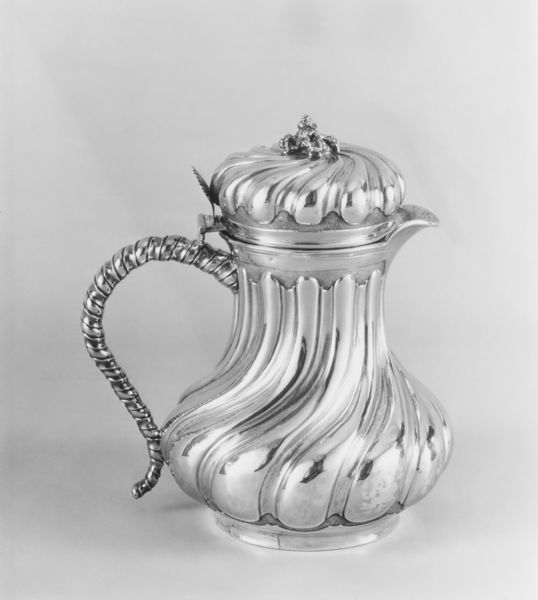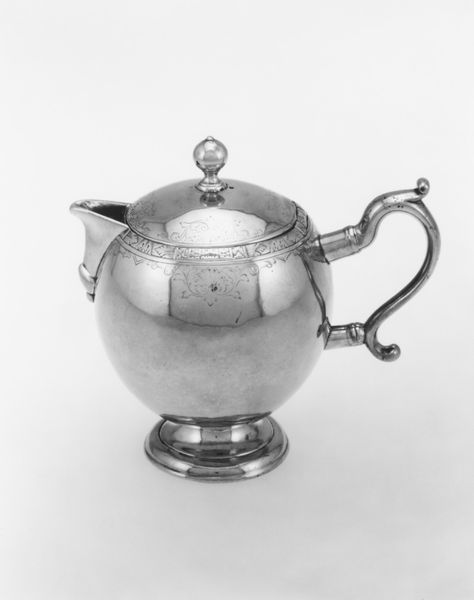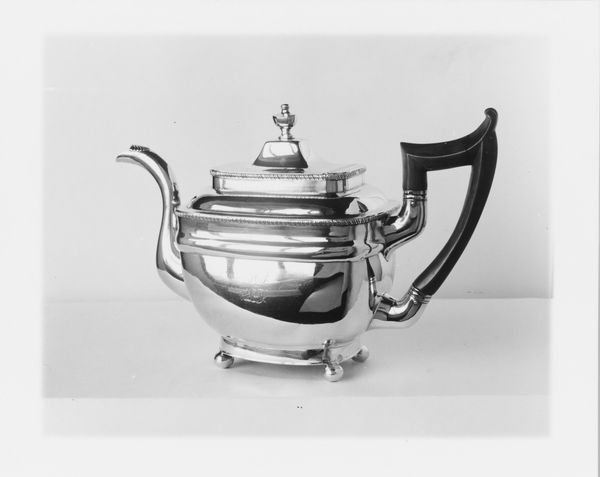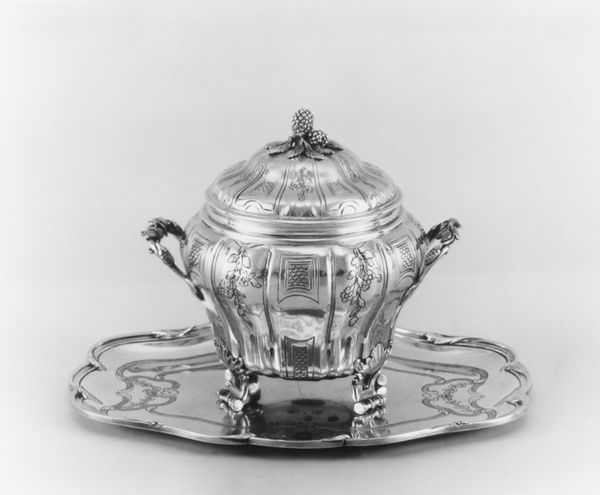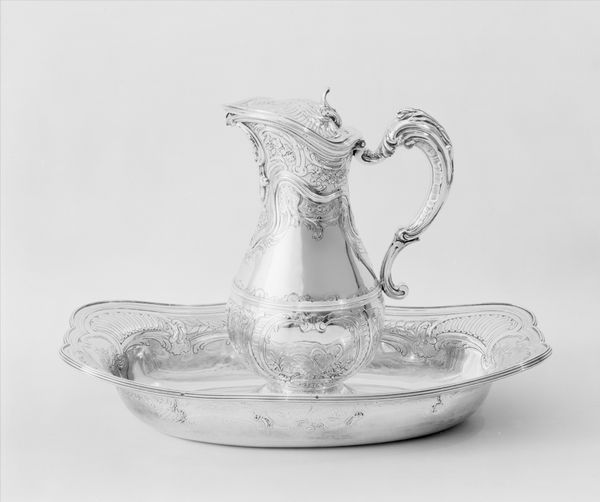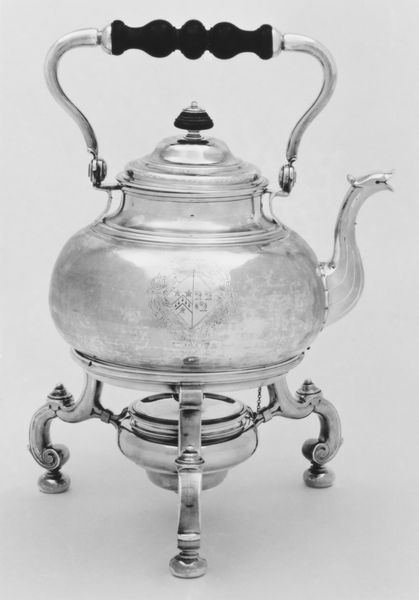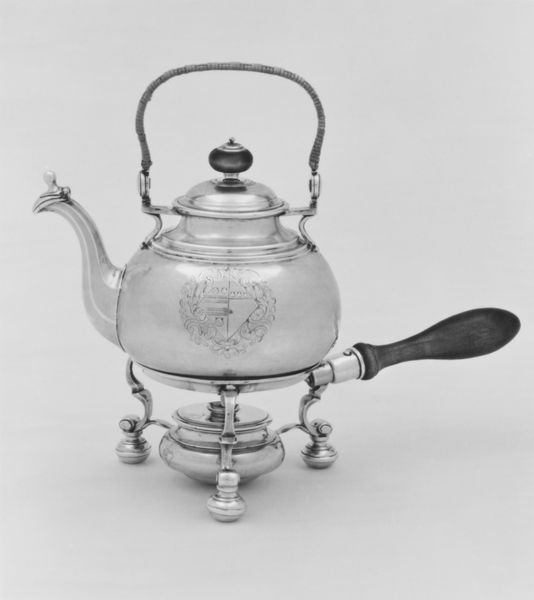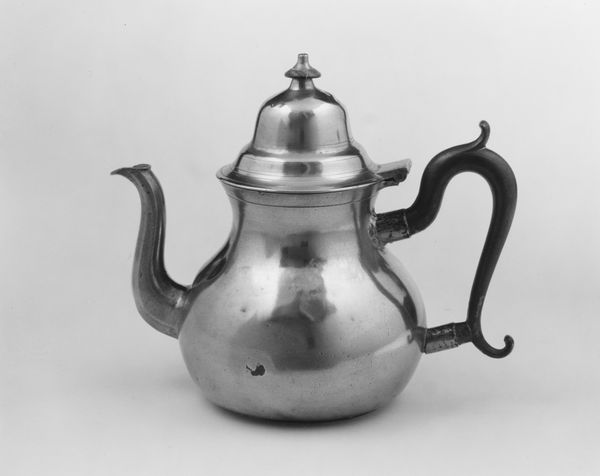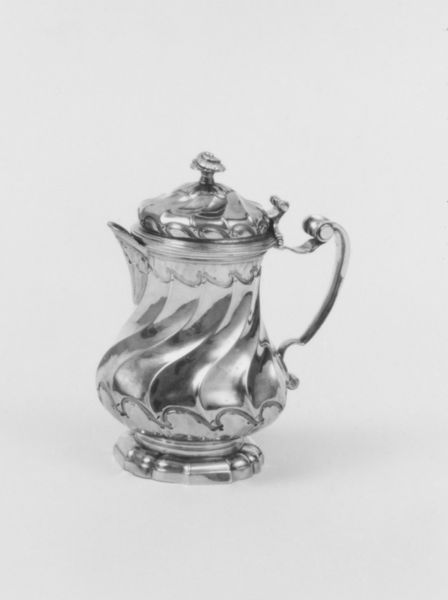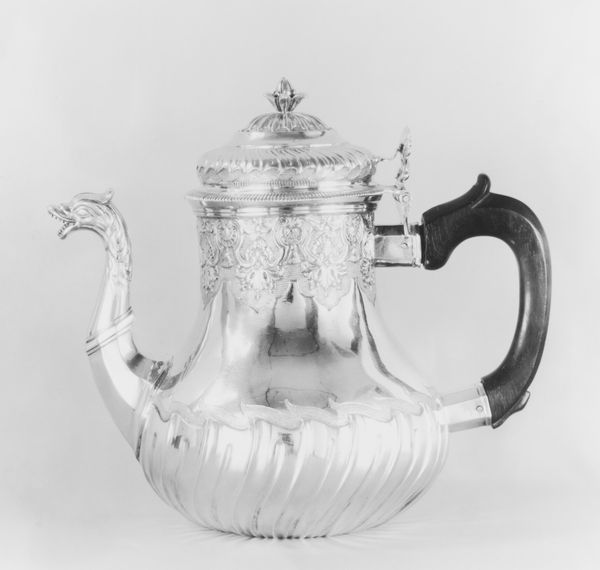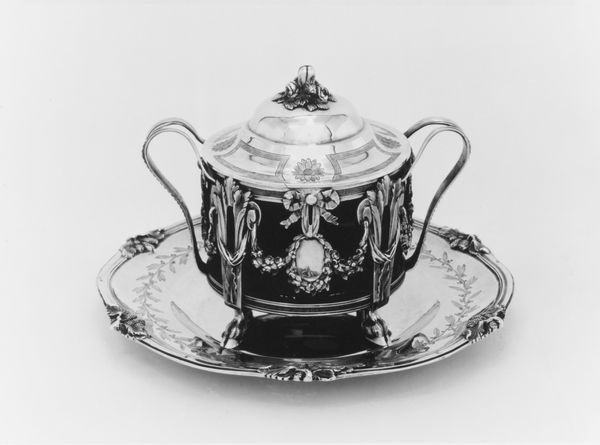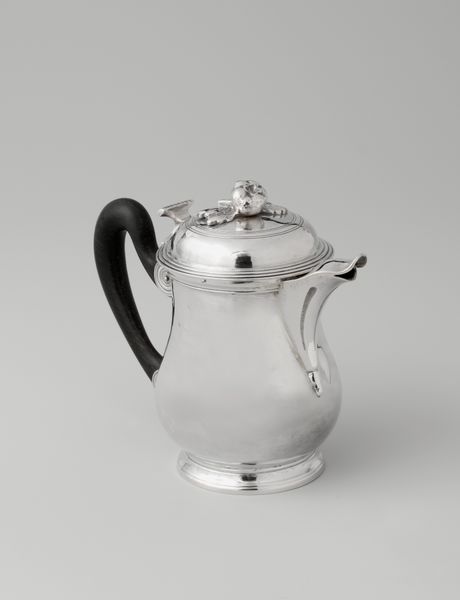
silver, metal, sculpture
#
silver
#
baroque
#
metal
#
stoneware
#
sculpture
#
decorative-art
Dimensions: Height (ewer .23): 9 1/4 in. (23.5 cm); Overall (basin .24): 2 3/16 × 12 1/4 × 9 in. (5.6 × 31.1 × 22.9 cm)
Copyright: Public Domain
Editor: Here we have a silver ewer and basin, made in 1737 or 1738. It feels incredibly formal, even ceremonial. What’s striking to me is how a mundane object, washing, becomes so elevated through art. What's your interpretation of this piece? Curator: It’s essential to see objects like this within the framework of 18th-century social hierarchies. Silver wasn't just a material; it was a statement of wealth and power. This ewer and basin, rather than purely functional, represent a performance of cleanliness inextricably tied to class. How do you see its function in relation to identity? Editor: That’s fascinating. I hadn’t considered how something as simple as hygiene could reinforce social stratification. So, this wasn't just about getting clean; it was about displaying your status? Curator: Precisely! Consider the labour involved in producing and maintaining such pieces. Someone was dedicated to polishing this silver, ensuring its constant gleam. This labour, often invisible, props up the image of the wealthy. Thinking about the unseen hands, how does this shift our understanding? Editor: It humanizes it, I think. It reminds us that objects, however grand, are always the product of human labour, and of complex social dynamics. Curator: Exactly. These objects reflect not just individual affluence, but systemic inequality. Appreciating craftsmanship means also acknowledging the power structures inherent in its creation and its place within systems of oppression. Editor: It makes me think about the responsibility of museums too. Do we perpetuate this narrative by showcasing these items? Curator: Absolutely. Museums are not neutral spaces. We must actively dismantle the narratives of power and privilege embedded within our collections. Re-contextualization, inviting diverse voices, and addressing historical injustices are crucial. What would you add? Editor: It all highlights the importance of continuously questioning and contextualizing art. I hadn't approached decorative arts from such perspective before! Curator: Hopefully, our talk invites further conversations. Examining these objects, and asking critical questions about their origins and cultural impact, can help unveil how art can become a tool for systemic analysis and change.
Comments
No comments
Be the first to comment and join the conversation on the ultimate creative platform.
